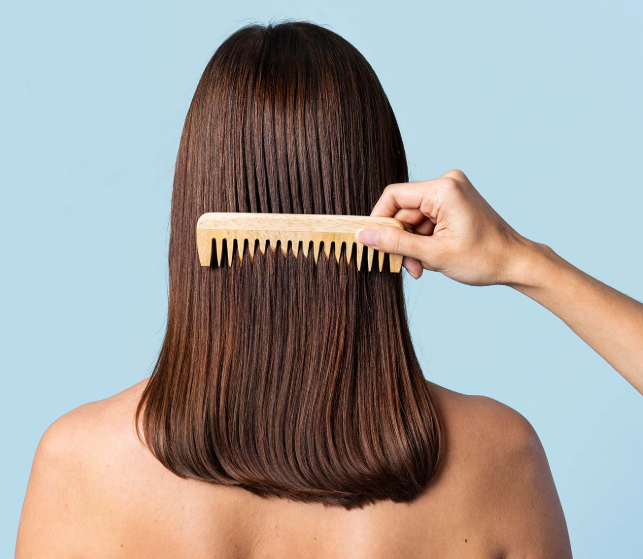Greasy hair can be frustrating, and many of us, including celebrities, often find it hard to manage. If you’re tired of dealing with excess oil, hair training might be the solution you’ve been looking for. While the idea has been around for some time, it’s recently gained more attention as a way to reduce greasy hair by decreasing the frequency of washes. So, how does it work, and how can you get started? Let’s break it down.
What is Hair Training?
Hair training, or scalp training, is all about reducing how often you wash your hair to help your scalp balance oil production. The idea is that by cutting back on shampooing, your scalp learns to regulate oil naturally, which can result in less grease and healthier-looking hair. This isn’t to be confused with the “no-poo” movement, which involves eliminating shampoo and conditioner entirely.
The goal of hair training is to allow your hair to return to its natural state without being overexposed to the drying effects of regular shampoo. This can lead to a more manageable scalp that doesn’t overproduce oil to make up for what’s been stripped away by frequent washes.
Does Hair Training Actually Work?
The effectiveness of hair training is still debated. Some dermatologists believe it can help regulate oil production by encouraging a gentler hair care routine. Others, however, argue that there’s no scientific evidence to support the claim. Regardless, washing your hair less frequently isn’t harmful, and many people find it works for them. If you’re tired of greasy hair, it’s worth giving it a try.
Why Washing Less Can Improve Hair Health
Over-washing your hair strips it of natural oils, which triggers your scalp to produce more oil to compensate. This cycle can lead to an oily scalp and greasy hair. When you reduce the frequency of hair washing, your scalp has time to adjust and can begin to produce oil at a more balanced rate.
Additionally, frequent washing can leave you with itchy, flaky skin from product build-up or an overproduction of oil. By washing less, you allow your scalp to function more naturally, which helps improve hair health in the long term.
How to Begin Hair Training
If you’re used to washing your hair daily, transitioning to washing it less frequently can be a bit of a shock. Start gradually by washing every other day for a few weeks, then move to every third or fourth day as your scalp adjusts. This process helps you avoid the greasy look while allowing your hair to acclimate to the new routine.
5 Tips for Effective Hair Training
- Experiment with Wash Frequency How often you wash your hair depends on your hair type and how much oil your scalp produces. Start by figuring out the ideal wash schedule for your hair and try to adjust without overproducing natural oils. Those with curly hair, for example, may find they need to wash less frequently than those with straight or fine hair.
- Consider Your Hair Type Hair training works for most hair types, but some textures are naturally better suited for it. Curly or coily hair often doesn’t need to be washed as frequently because sebum has a harder time traveling down the hair shaft. If you have straight or fine hair, you might need to adjust more slowly as you train your scalp.
- Choose the Right Shampoo The type of shampoo you use plays a big role in how well hair training works. Shampoos with harsh detergents can dry out your scalp, causing it to overproduce oil. Opt for gentler shampoos that keep your scalp healthy and retain moisture, preventing excess oil production.
- Use Dry Shampoo Dry shampoo is a game-changer when it comes to hair training. It helps absorb oil and freshens up your hair between washes. The key is to apply it before your hair becomes too greasy. This helps keep oil at bay before it even has a chance to spread.
- Brush Your Hair Daily Brushing your hair regularly is essential, even if you think it will spread the oils. Brushing helps exfoliate your scalp and distributes the natural oils throughout your hair, which can enhance shine and prevent your scalp from overworking. Brushing from the scalp to the ends helps keep your hair nourished and shiny.
How Long Does It Take to See Results?
Everyone’s hair is different, so the time it takes to see results from hair training can vary. On average, most people begin to notice positive changes after two to three months of consistent practice. By this time, your scalp should have adjusted to the new routine, and you should experience less oil buildup and healthier hair.
Hair training is a gradual process, but with the right approach and patience, it can help you achieve a more balanced, oil-free scalp and healthier-looking hair.

发表回复